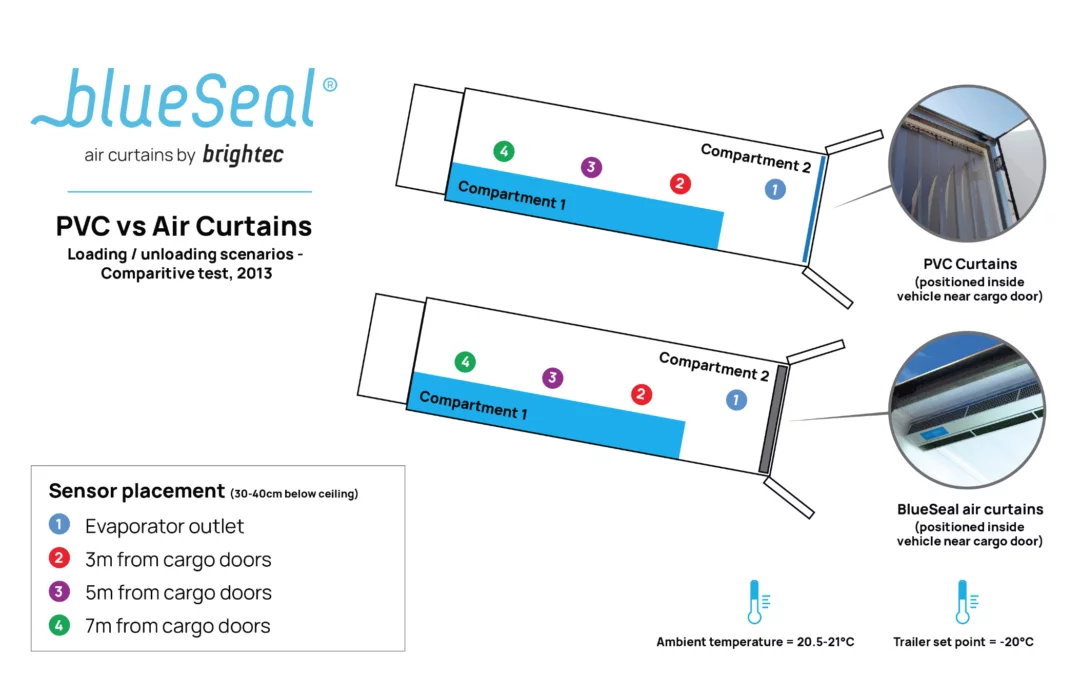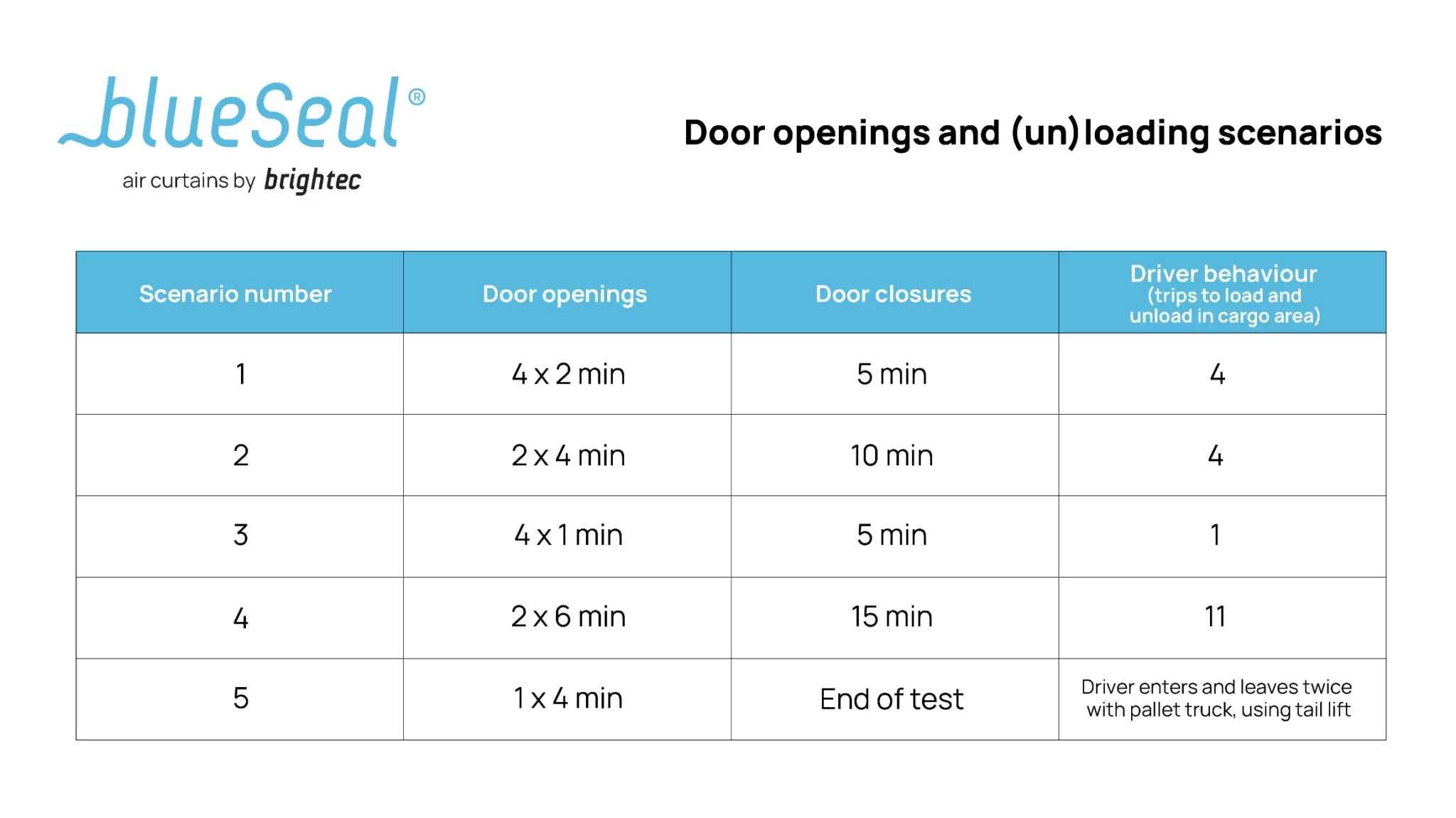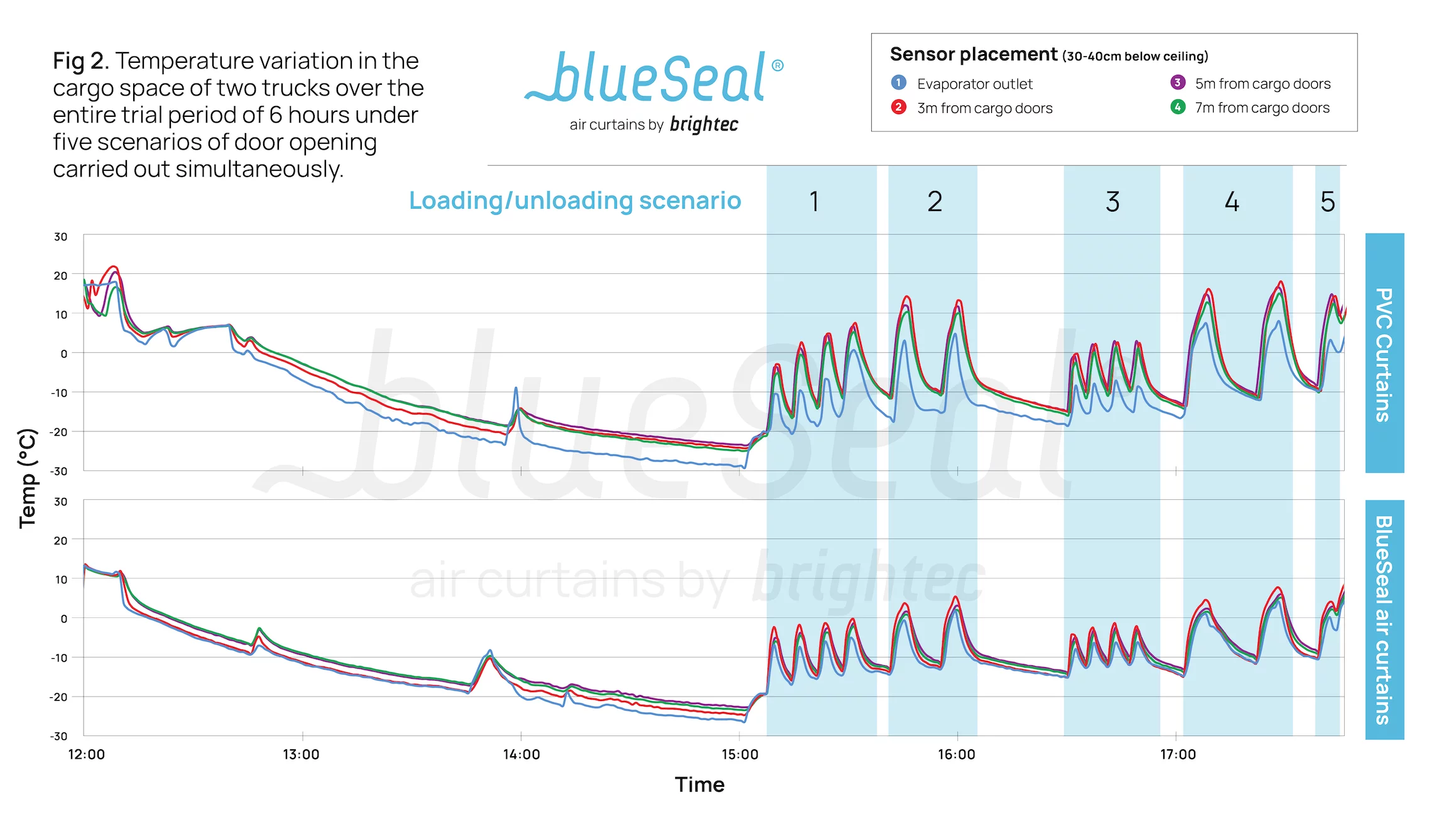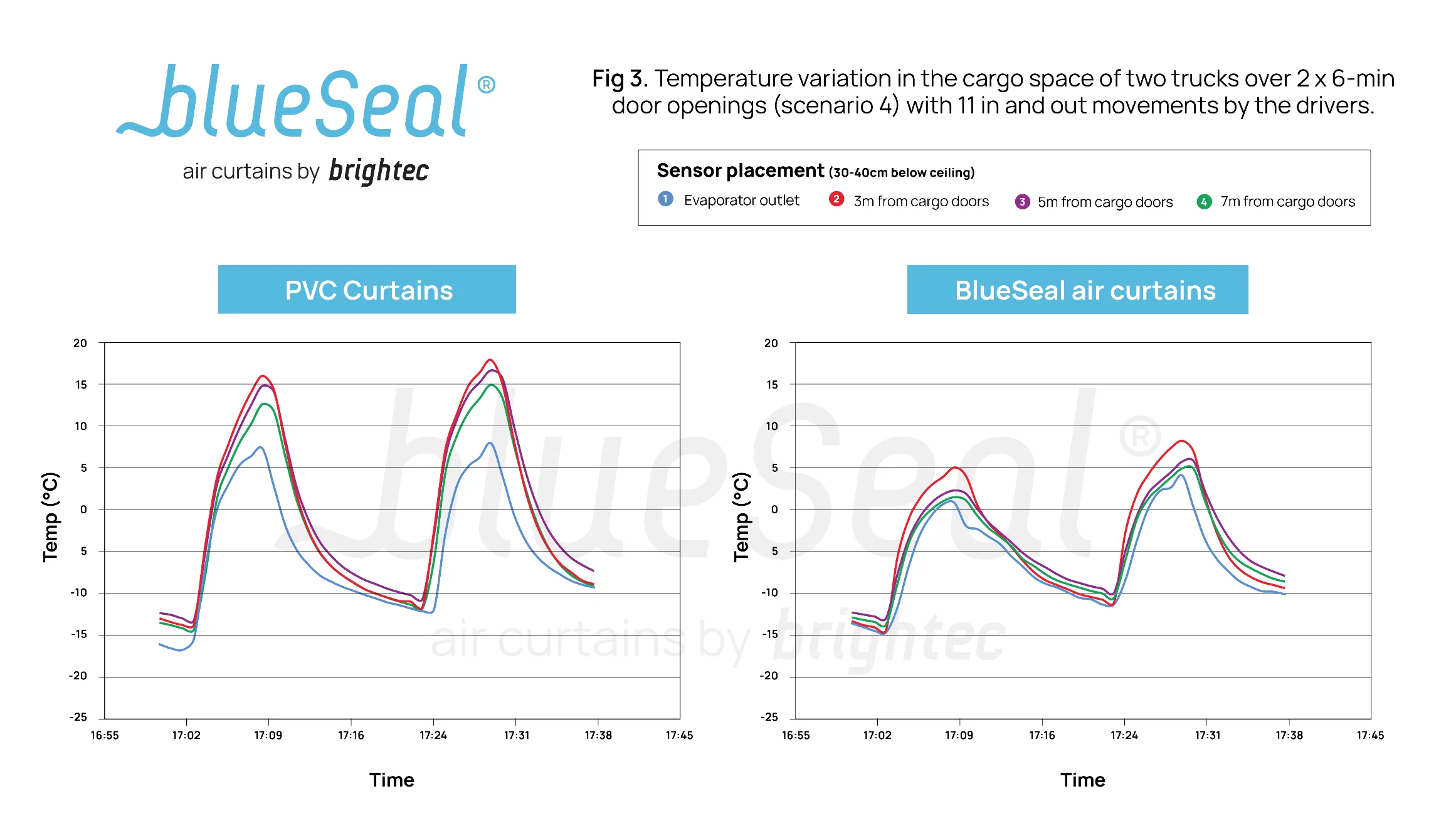
BlueSeal vs PVC Curtains – Air Curtains for Energy-Efficient Refrigerated Trucks: A Comparative Study
Introduction: Air Curtains for Energy-Efficient Refrigerated Trucks
At the request of a major French refrigerated vehicle rental company, Brightec carried out a comparative test of BlueSeal air curtains against traditional PVC curtains. The objective was to measure temperature retention and energy efficiency during real-world loading/unloading conditions (see Table 1 for scenario overview).
Test Objective: Comparing BlueSeal Air Curtains vs PVC Curtains
We designed the study to reflect real distribution conditions, including both short and long door-opening scenarios. While PVC curtains have long been used as climate barriers, they can obstruct loading, require frequent hygiene maintenance, and are often pushed aside during unloading – reducing their effectiveness. Air curtains for energy-efficient refrigerated transport offer an invisible, obstruction-free barrier that avoids these drawbacks.
Testing Conditions: Side-by-Side in Refrigerated Trucks
The test took place in November 2013 inside our customer’s facility. Two identical trucks were placed parallel (10 m apart) with the same refrigeration units. One truck was fitted with PVC strips, the other with a BlueSeal air curtain (Figure 1).
Both trucks were cooled to -20 °C before testing. Door openings were synchronised, and drivers from the customer’s own fleet executed the scenarios as they would during live deliveries (Table 1).

Results: Air Curtains for Energy-Efficient Refrigerated Trucks Perform Better
Figures 2 and 3 show the temperature-time curves for each scenario. Across all five scenarios, BlueSeal maintained cargo temperatures up to 10 °C lower than PVC curtains in longer door-opening scenarios (Scenarios 2 & 4) and 5-8 °C lower in short openings (Scenarios 1 & 3). In Scenario 5, which involved a tail lift and pallet truck, BlueSeal again held a clear advantage.
Why Air Curtains Outperform PVC Curtains in Energy Efficiency
Sensor readings (Figure 3) reveal that BlueSeal created a clockwise airflow at the door, forming an extra protective barrier for the cargo. PVC strips allowed warm air to enter and circulate freely, resulting in less temperature protection.
With PVC curtains, Sensor 1 (evaporator outlet air) recorded much lower temperatures than other sensors, indicating that the cooling unit had to work harder to restore set temperature – driving up diesel use.
Energy Savings with Air Curtains vs PVC Curtains
By requiring less cooling energy to restore target temperatures after door openings, BlueSeal significantly reduces refrigeration workload and fuel consumption. Table 2 summarises the reduced cooling demand observed during testing.


Conclusion: BlueSeal Air Curtains – A Better Climate Barrier than PVC Curtains
The data from Figures 2 & 3 and Tables 1 & 2 clearly show that BlueSeal air curtains for energy-efficient refrigerated trucks outperform PVC strips in maintaining cold chain integrity, lowering cooling energy use, and reducing operating costs. For operators seeking energy-efficient refrigerated transport, the switch from PVC to BlueSeal offers immediate and measurable benefits.
For more information on BlueSeal air curtains, please contact our Brightec consultants at [email protected]